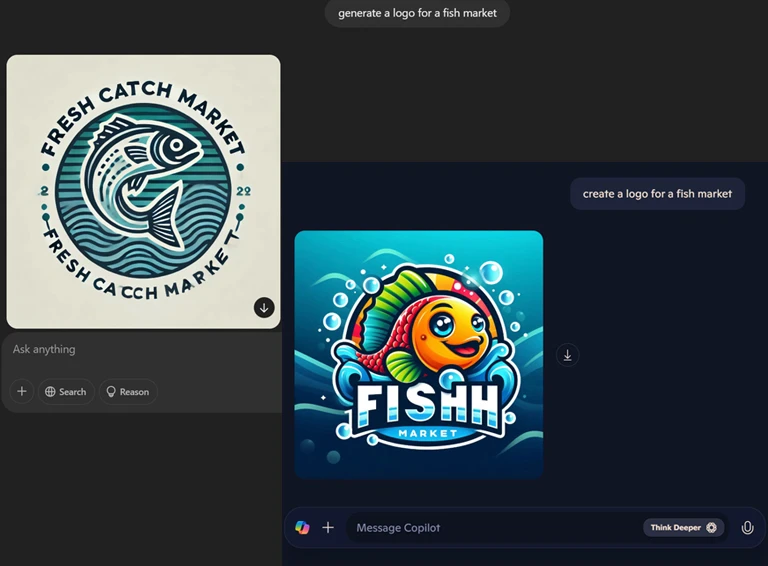Artificial intelligence (AI) has made significant strides, but its limitations mean it can’t fully replicate human creativity. Let’s explore how AI can aid in logo creation and when to leverage its capabilities.
A great logo demands strategic thinking, artistic talent, and a deep understanding of your brand’s visual identity. While AI can assist, human creativity and expertise are crucial for capturing your brand’s essence.
AI excels in automation, but falls short in creative thinking and planning. For a B2B logo that truly represents your brand, human expertise is indispensable.
Pros
1. Budget-friendly
AI-generated logos are ideal for urgent needs, producing a design in mere seconds. While they might not be perfect, they can serve as a temporary solution for business cards, social media, or other immediate uses. You can always refine or rebrand with a professional graphic designer when time and budget allow.
Boost Your Online Visibility!
ME DeZign offers a complimentary SEO consultation to optimize your website, increase search engine rankings, and drive more traffic to your site.
2. Time-saver
For startup brands, AI is a massive time-saver, quickly generating multiple logo versions based on your preferred colors, shapes, and words. This rapid design process allows you to compare options and refine your visual identity in no time, without breaking the bank.
Cons
1. Can You Trademark the Logo? Maybe.
Trademarking an AI-generated logo can be challenging. Since AI designs are based on algorithms and existing styles, it’s likely that similar logos already exist. This increases the risk of infringement and makes it difficult to guarantee unique ownership. Thorough research and consultation with a lawyer are essential to ensure your logo doesn’t infringe on existing trademarks.
2. Bitmap
Most AI-generated logos, at least as of the time of writing, are bitmap-based. For example, ChatGPT generates logos in WebP format, while Meta AI uses PNG format. Some paid services offer vector-based tools, but if you’re not careful, you may end up with a low-quality bitmap image masquerading as a “logo.” What’s the issue with bitmap logos? They require conversion to vector format before they can be scaled without pixelation. While there are tools available to convert bitmap to vector, these software solutions tend to be inaccurate, especially when dealing with complex shapes. Another option is to hire a human designer to convert the bitmap to vector.
Want to boost your search rankings?
I’m here to help!
Conclusion
While AI has revolutionized many industries by automating complex tasks, it still struggles to match human creativity, particularly when combining text and images into a cohesive visual identity. For now, AI can’t replicate the nuance and expertise of a human artist. To ensure a unique and effective B2B logo, it’s best to leverage your own creative skills, collaborate with a human designer, or refine your logo with a professional touch.
Reach out to ME DeZign now and watch your business thrive!

About the Author: Miki
Miki is an entrepreneur in design and marketing, specializing in idea development and programming. Motivated by career advancement, she pursued an MBA.
On the side, Miki works as an AI trainer, ensuring model responses are appropriate. Since 2018, she has taught Japanese in Denver.
She visits Japan annually to spend time with her family. Additionally, she loves Japanese food and onsen.

